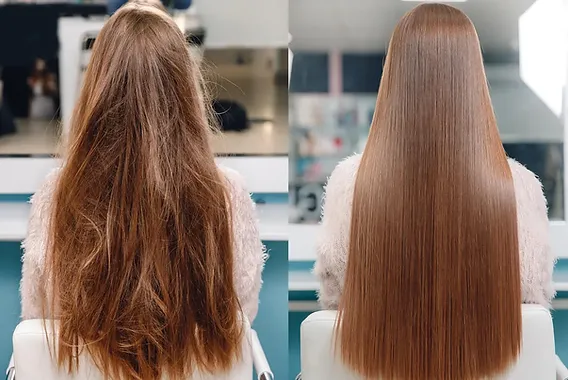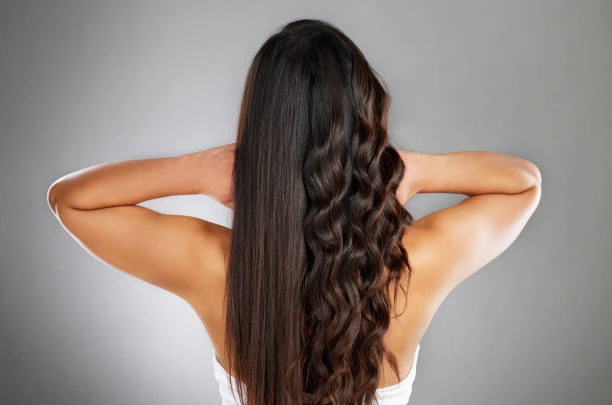Are you struggling with frizzy, unmanageable hair? Keratin and smoothing treatments are two popular solutions for taming unruly locks and achieving sleek, smooth results. But while these treatments might sound similar, they have distinct differences that cater to various hair types and styling preferences. In this guide, we’ll dive into the pros and cons of keratin vs. smoothing treatments, helping you choose the one that best fits your needs.
What is a Keratin Treatment?
A keratin treatment is a semi-permanent hair straightening process that uses a keratin-based solution to repair damage, smooth the hair shaft, and reduce frizz. Keratin is a protein naturally found in hair, and this treatment replenishes lost keratin, creating a protective coating around each strand. This coating helps make hair stronger, shinier, and smoother.
Key Features of Keratin Treatments
- Results: Provides sleek, straight hair with a glossy finish.
- Longevity: Lasts 3 to 6 months, depending on hair type and aftercare.
- Frizz Reduction: Dramatically reduces frizz, even in humid conditions.
- Hair Texture: Maintains natural volume while smoothing and strengthening.
- Process: Takes about 2-4 hours, depending on hair length and thickness.
Recommended For: Those looking for frizz control and a smooth, manageable look without fully straightening their natural texture.
What is a Smoothing Treatment?
A smoothing treatment is a hair treatment designed to soften and smooth the hair rather than permanently straighten it. This treatment doesn’t alter the natural texture as much as a keratin treatment but focuses on making hair more manageable, reducing frizz, and enhancing shine. Many smoothing treatments contain amino acids, proteins, or other conditioning agents to improve hair health.
Key Features of Smoothing Treatments
- Results: Delivers a smoother, softer look with reduced frizz but maintains the natural curl or wave.
- Longevity: Typically lasts 2-3 months with proper aftercare.
- Frizz Reduction: Reduces frizz and adds shine, but results may vary based on hair texture and humidity.
- Hair Texture: Enhances natural texture for a polished look without eliminating curls or waves.
- Process: Takes around 1-3 hours, depending on hair length and type.
Recommended For: Those who want smoother, shinier hair but want to keep their natural waves or curls.
Keratin vs. Smoothing: A Comparison
Both keratin and smoothing treatments are designed to improve hair’s manageability and reduce frizz, but they cater to different hair needs and preferences. Here’s a detailed comparison to help you decide:

| Feature | Keratin Treatment | Smoothing Treatment |
|---|---|---|
| Purpose | To reduce frizz and straighten hair | To smooth and add shine while maintaining texture |
| Ingredients | Keratin-based protein solutions | Amino acids, proteins, and conditioning agents |
| Longevity | 3–6 months | 2–3 months |
| Frizz Reduction | High | Moderate to high, depending on texture |
| Hair Texture Change | Smooths and can straighten natural waves | Smooths but maintains waves/curls |
| Time Requirement | 2–4 hours | 1–3 hours |
| Aftercare | Sulfate-free shampoos and low-heat styling recommended | Similar aftercare, depending on treatment type |
How to Choose Between Keratin and Smoothing Treatments
Choosing between a keratin and smoothing treatment largely depends on your hair goals, lifestyle, and natural hair type. Here are some key factors to consider:
1. Desired Look
- For Sleek, Straight Hair: Choose a keratin treatment if you want a more straightened look with minimal frizz. It’s an ideal choice if you prefer a smooth, polished style every day.
- For Enhanced Natural Texture: If you want to maintain your waves or curls but reduce frizz and add shine, a smoothing treatment will likely be a better choice.
2. Maintenance and Aftercare
- Keratin Treatments: Require sulfate-free products and minimal exposure to water in the first 48 hours post-treatment. Over time, keratin treatments may require touch-ups for areas that start to lose smoothness.
- Smoothing Treatments: Typically require similar sulfate-free aftercare, though they may need less maintenance due to the less drastic change in texture.
3. Hair Type
- Thick, Coarse Hair: Keratin treatments work well for thick, coarse hair as they can help smooth out the texture and make it more manageable.
- Fine or Wavy Hair: Smoothing treatments can help control frizz and boost shine without making hair look too flat, making it a great choice for fine or naturally wavy hair.
4. Duration and Budget
- Longevity: Keratin treatments last longer (3-6 months), so although they may be more expensive upfront, they might be more cost-effective over time if you don’t want frequent touch-ups.
- Budget-Friendly Option: Smoothing treatments are generally less expensive, but they don’t last as long and may require more frequent applications if you want to maintain results.
Pros and Cons of Keratin vs. Smoothing Treatments
Both treatments have their advantages and limitations. Here’s a quick breakdown:
Keratin Treatment: Pros and Cons
Pros:
- Provides long-lasting results
- Dramatically reduces frizz
- Adds intense shine and smoothness
- Ideal for thicker or coarser hair
Cons:
- More expensive than smoothing treatments
- Can reduce natural volume
- Requires a longer application time and strict aftercare
- Not always ideal for fine or very curly hair types
Smoothing Treatment: Pros and Cons
Pros:
- Enhances natural texture and adds shine
- Lower maintenance than full straightening treatments
- Suitable for all hair types, including fine and wavy
- Shorter application time and more affordable
Cons:
- Results don’t last as long (2-3 months)
- Frizz reduction may vary depending on humidity
- May not provide the straight, sleek look some desire
Common FAQs: Keratin vs. Smoothing Treatments
1. Can I do these treatments at home?
Professional results are always recommended, especially for keratin treatments. DIY kits can be unpredictable and may not deliver the same quality or longevity as a salon service.
2. Are keratin and smoothing treatments safe?
Both treatments are generally safe when performed by a licensed professional. However, some keratin treatments contain formaldehyde or similar ingredients, so it’s best to consult with your stylist and opt for formaldehyde-free options if you have concerns.
3. Can I color my hair after these treatments?
For the best results, color your hair before the treatment. If you plan to color after, consult your stylist, as some treatments may affect color absorption.
4. How soon can I wash my hair after treatment?
Keratin treatments require waiting 48-72 hours before washing, while most smoothing treatments allow for washing sooner. However, it’s best to follow your stylist’s instructions for optimal results.
Keratin vs. Smoothing: Which Treatment Wins?
Both keratin and smoothing treatments can transform your hair’s look and feel. Here’s a quick recap to help you make the best choice:
- Choose Keratin if you want long-lasting smoothness, reduced frizz, and a straighter style.
- Choose Smoothing if you prefer to enhance your natural texture, adding shine and softness without changing the curl pattern.
At SVY Cosmetics, our expert stylists can help you decide which treatment will suit your hair type and style best. Book a consultation today, and let’s help you achieve smooth, frizz-free hair that suits your personality and lifestyle!
Final Thoughts
Keratin and smoothing treatments each offer unique benefits. Whether you’re looking to achieve sleek, straight locks or simply want more manageable, shiny hair, a consultation with a professional can make all the difference. Visit SVY Cosmetics for personalized advice and professional treatment to get the hair you’ve always dreamed of!

